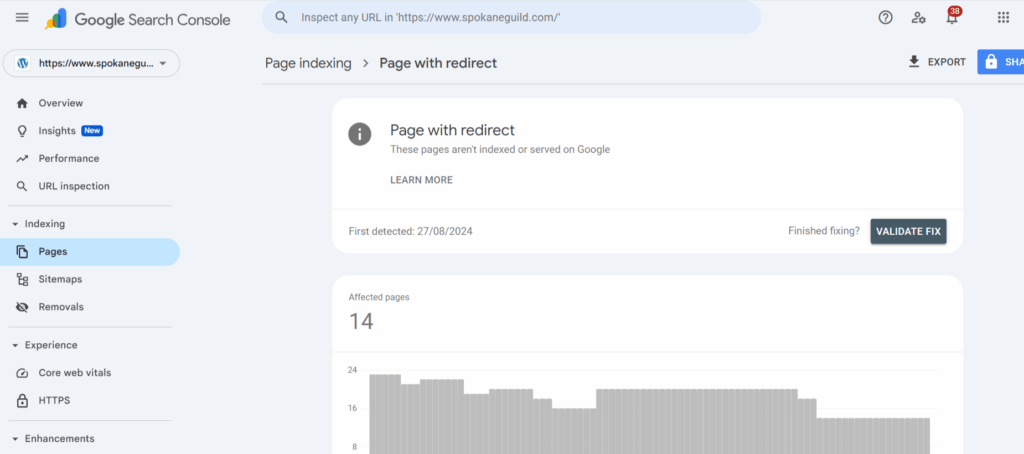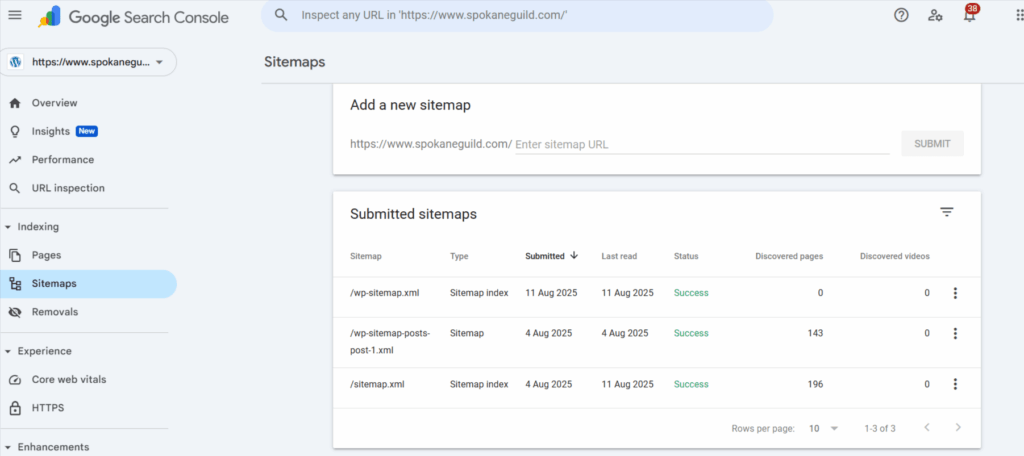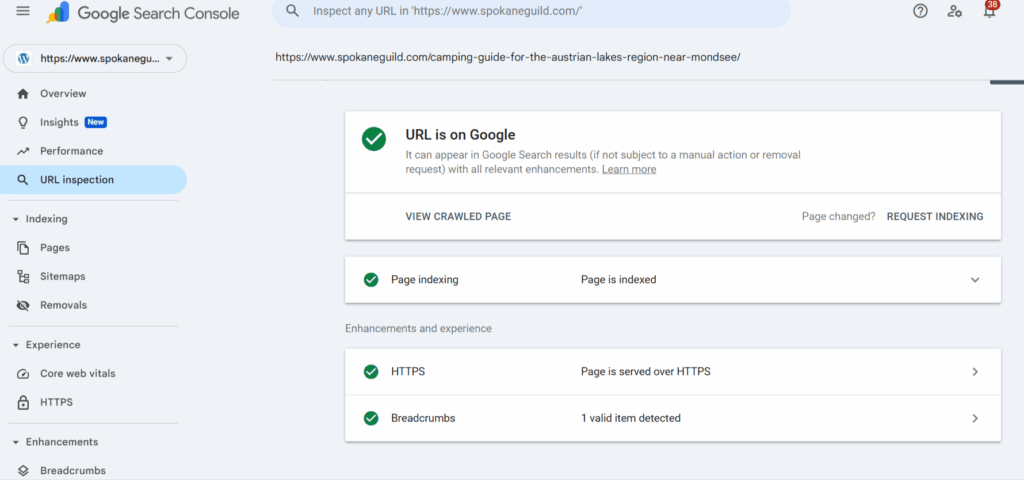
What “Page with Redirect” Means in GSC and the Correct Way to Fix It
- accuindexcheck
- 0
- Posted on
When you spot the status “Page with Redirect” in GSC (Google Search Console), it can lead to some questions about how Google is indexing your website. It means the URL you have either submitted or the one Google has discovered is redirecting to another page to see content there as opposed to having any content available at its own URL. Redirects are a very common SEO technique that is applied to URL changes or page merging, but they can cause search visibility issues when wrongly implemented.
What does this status exactly mean? Why does it appear in GSC? And most importantly, what can you do about resolving it? This article will lead you through the step-by-step journey and make you confident in fixing redirects so that affected pages get correctly indexed and ranked.
“Page with Redirect” in Google Search Console
Whatever URL is so classified in GSC as a Page with Redirect means that Google’s bots discovered the page during a crawling attempt redirecting users and the search engine to another URL. The browser/server would instead proceed to redirect the visitor to a location other than the original page, which would otherwise load and have its contents displayed.
How Google Identifies a Redirect:
Redirections occur when a server returns any of the redirect status codes such as 301, 302, 307, from the source code meta refresh, or some JavaScript redirecting codes in the page. If during crawling the user-agent Googlebot is not served with the original page content but is redirected to another URL, such a page is listed as “Page with Redirect” in GSC.
Intentional vs. Unintentional Redirects:
- Intended Redirects: These are natural and intended changes, such as a move or merging of content, such as from older-page.html to newer-page.html with a 301 redirect.
- Unintended Redirects: These errors may be the byproduct of some plugin conflict, faulty server directives, or a hacked website. Such redirects may cause indexing problems, and if not fixed, can really hamper your SEO.
Types of Redirects That Can Trigger Page with Redirect
1. 301 Permanent Redirect: This type of redirect states that a page is permanently moved to a certain URL. This type of redirect is ideal for permanent URL changes because it passes most of the original page’s SEO value to the new destination. The search ranks are maintained by a 301 redirect so that the users are not at all confused about the change in location.
2. 302 Temporary Redirects: 302 redirects indicate that the movement is temporary. Search engines are informed that the original page will return and so generally will not pass SEO value to the redirected page. This kind of redirect is a better choice when short-term situations arise, such as when the website is being maintained or tested, but if such redirects remain for longer, temporary redirects will hurt SEO.
3. Meta Refresh Redirects: A meta-refresh redirect happens if the HTML of a page calls for it and usually includes a time lag prior to redirecting to another URL. Being the less user-friendly kind, these are never recommended by SEOs since they might generate confusion among users and search engines. Moreover, this method of redirecting usually passes a weaker SEO value than server-side redirects.
4. JavaScript Redirects : Occur when the page uses JavaScript to redirect users after the page has loaded. Generally, such redirects are somewhat less preferred than server-side redirects since search engines such as Google may be able to process them. They may be utilized to perform dynamic or conditional redirects depending on user actions or certain conditions.
Common Causes of “Page with Redirect” in GSC
URL changes without updating sitemap
When a page is moved or changed in name without sitemap updating, Google may keep on trying to crawl the old URL. Usually, this would cause a redirect status, since the old URL simply points to another location; Google will, therefore, categorize it as a “Page with Redirect.”
HTTP to HTTPS Migration
In most cases, when your site moves over to HTTPS for security reasons, the HTTP versions of its pages are set up for automatic redirects to their HTTPS counterparts. The redirect status in Google Search Console appears because this redirect type involves a protocol change that Google monitors.
Mobile vs. Desktop Redirects
The websites that redirect their visitors depending on their devices farther to another destination for mobile users and another for desktop users are known as device redirects. These device-based redirects cause Google to tag pages as “Pages with Redirect” while crawling.
Canonical URL Misconfigurations
Improper or irregular canonical tagging might mislead the search engine to treat a given page as a duplicate and switch indexing preference to another URL developer. This sort of misconfiguration can draw Google into judging the page as a redirect.
Accidental Redirect Loops
A redirect loop happens when multiple URLs continuously redirect to one another, causing confusion for both users and search engines. One of the things Google does is mark these pages with a redirect status until the problem is solved.
How to Fix “Page with Redirect” in GSC
Start by first recognizing the redirect type and the target URL. Verifying if this redirect is needed will help update your sitemap and links accordingly. Then test to ensure proper indexing. These steps fix the issue fast.

Step 1: Identify the redirect type and destination
The first step is to know what sort of redirect has been put up and where it sends the users and/or the search engine. This knowledge helps make a judgment on whether the redirect is appropriate or causing problems.
- Confirmation of an HTTP status code is of utmost importance. Chrome DevTools would come very much handy with this. You expect to get 3xx codes for redirects: 301 Permanent, 302 Temporary, or even some Meta Refresh, and JavaScript-based redirect.
- Check or verify the destination URL where the redirect points. They provide the confirmation of whether the redirecting page is going to the right page or not.
- For very large sites, doing so for every URL may not be feasible. This is where Accu Index Check really comes in handy because it does a full scan of your site and returns a detailed report of all the redirects, including their types and target URLs, which is a great time-saver and gives you a very clear picture.
Step 2: Confirm if the Redirect is Intentional
Having the redirect info, the next thing you need to check is whether the redirects were there purposefully or by mistake. The ones done by purpose generally would not need correction, but the ones being unintentional could lay down SEO problems that are damaging.
- Check if any redirect matches any recent change in the site. Common changes would be URL restructuring, domain migrations, or going for HTTPS, where 301 redirects are often used to retain SEO value.
- Find out if any temporary redirects (302) are being exercised for some legitimate reasons for the short term, like maintenance or A/B testing.
- Determine any redirects arising out of a plugin error, a server misconfiguration, outdated internal links, or typos in the URLs. Such unplanned redirects should get rectified at the earliest to prevent indexing problems and traffic losses.
Step 3: Update Sitemap and Internal Links

Your sitemap and internal linking structure should reflect the actual URLs you want to be indexed — and thus not those redirecting elsewhere. Keeping these updated is beneficial for crawl efficiency and SEO.
- Remove from your sitemap any URLs that currently redirect to another page. Google prefers sitemaps with URLs that point directly to the final destination so as to avoid unnecessary crawl steps.
- Audit all the website’s internal links pointing to forwarding URLs and update them to either point directly to the Final URL or not through a redirect chain, which is much more user-friendly.
- Basic SEO best practices require the review and update of sitemap and internal links regularly so that new redirect issues do not arise.
Step 4: Remove Unnecessary or Broken Redirects
Redirect chains and loops create confusion for search engines and users and dilute SEO equity. Cleaning these will make crawling easier for your website and give it better ranking potential.
- In addition to redirect chains, it’s important to identify redirect loops. A redirect chain occurs when one URL redirects to another, which then redirects to a third, and so on. They cause delays in crawling and reduce the SEO value passed through links.
- Redirect loops, on the other hand, make URLs endlessly bounce around, causing crawl errors and bad UX.
- The process of fixing these issues involves removing intermediate redirects and ensuring that all URLs directly point to their final intended destination. It helps create a seamless navigation experience for both users and search engines.
Step 5: Test with GSC’s URL Inspection Tool

After corrections are applied, ensure that Google acknowledges these changes and indexes the URLs accordingly.
- Visit the URL Inspection Tool in Google Search Console and put in affected URLs to check for a current status and how they are viewed by Googlebot after being fixed.
- Submit the fixed URLs for re-indexing to the Google crawl team for faster re-crawling.
- Keep Track regularly through the Coverage report to ensure that “Page with Redirect” warnings have indeed been resolved.
- To track their status, Accu Index Check could be a great tool to keep eye on the redirect and indexing health on an ongoing basis and sends an early alert when new redirect issues surface.
Best Practices for Redirect Management
A few important best practices to take into consideration:
Limit Redirects: Too many redirects can slow down the performance of a page and could act as barriers for search engines to crawl your specific pages. Redirect only when absolutely necessary.
With the Permanent Change Intended: Search engines are informed through 301 redirects that the move is permanent and, consequently, can consider the SEO value and link equity as transferred to the new URL. For a permanent move, never select a temporary redirect such as 302.
Avoid Redirect Chains or Loops: A redirect chain occurs when a URL redirects more than once before finally reaching the intended endpoint; a redirect loop causes a page to adsurdly keep redirecting. Both search engine entities will get confused and users will probably become annoyed, causing various “indexing” tragedies and a drop in traffic.
Keep Your Sitemap and Internal Links Updated: The sitemap should only include final URLs; then revise internal links so that they point directly to these final URLs as opposed to URLs that perform the redirect. This will largely cut down on unnecessary redirects and make the crawling process easier for search engines.
How Redirects Affect SEO
How redirects work in SEO? The answer is that they affect how search engines index sites and users interact with a site.
- Effect on Actual Indexing: It’s common knowledge that search engines go through redirects to reach the end-page destination. If implemented properly, they assist in the correct indexing of a page, but when done wrongly, they can exclude a page altogether or delay the indexing process.
- Passing PageRank: A properly configured 301 redirect transfers nearly all of the original page’s SEO value (PageRank) to the new URL, allowing the new page to retain its search rankings. In contrast, using temporary redirects can result in partial or complete loss of SEO value, which may weaken the new page’s authority.
- User experience: Redirects impact the page loading times and smooth navigation. If overused or misused, redirects may lead to a slow site and confused users, increased bounce rates, and decreased engagement. On the other hand, direct redirects can be the smooth interface that keeps users willing and engaged.
FAQs
Does a Page with Redirect status mean my page is removed from the index?
Not always. It simply indicates that Google detected the URL redirects to another page, so it doesn’t index the original URL—instead, it indexes the final destination page.
Will fixing redirects help rankings?
Yes, fixing redirects can improve rankings as link equity is ensured to flow through properly, crawl errors are minimized, and Google is also assisted to index the correct pages better and faster.
How long will it take Google to reflect the changes?
Usually, this varies by a few days to weeks following the fixing of redirects. Using tools such as the URL Inspection tool of the Google Search Console will make things faster by requesting re-indexing.
How does one fix page with redirect in GSC?
Try to identify what kind of redirect is this and where it redirects to. Inquire if it was intentional, and then proceed to fix the sitemap or internal links if relevant, delete unnecessary redirects, and test the URLs of these redirects via the URL Inspection Tool inside Google Search Console.
How to stop a page from redirecting?
Depending on what method is being used for a redirect, remove or disable that redirect rule within your server settings, CMS, or plugin, and then change any links referring to the redirected URL to directly refer to the actual page.
How to stop 302 redirect?
Change the redirect on your server or CMS settings to 301 if it should be permanent. Else, if no redirect is necessary, simply remove it.
In Conclusion
Incidences of the “Page with Redirect” notification in Google Search Console are far more common than one could probably imagine, and there is usually nothing to worry about. Most often, it simply means that Google has detected a redirect, which is usually intended and harmless.
However, you may want to check on it now and then for any sneaky unexpected redirect issues that could affect your SEO or user experience. Having gone through this report many times, it definitely has become one of those SEO maintenance checklists for me to keep things running well.
You already have the best tool at hand, Google Search Console, to keep the status of your site; the following step in keeping your SEO clean is to stay on top of those alerts.